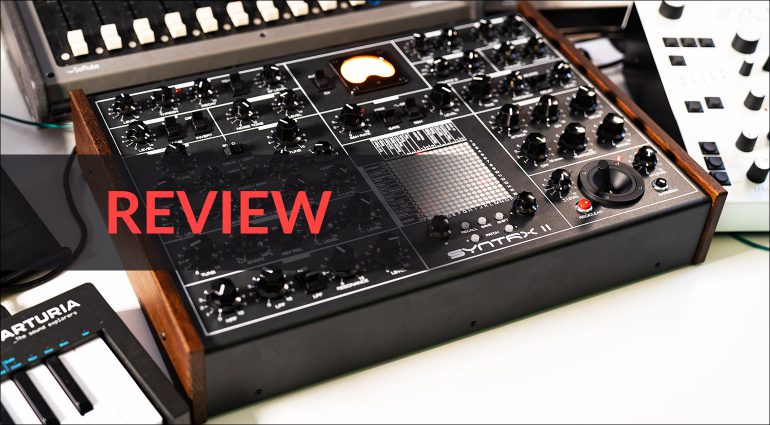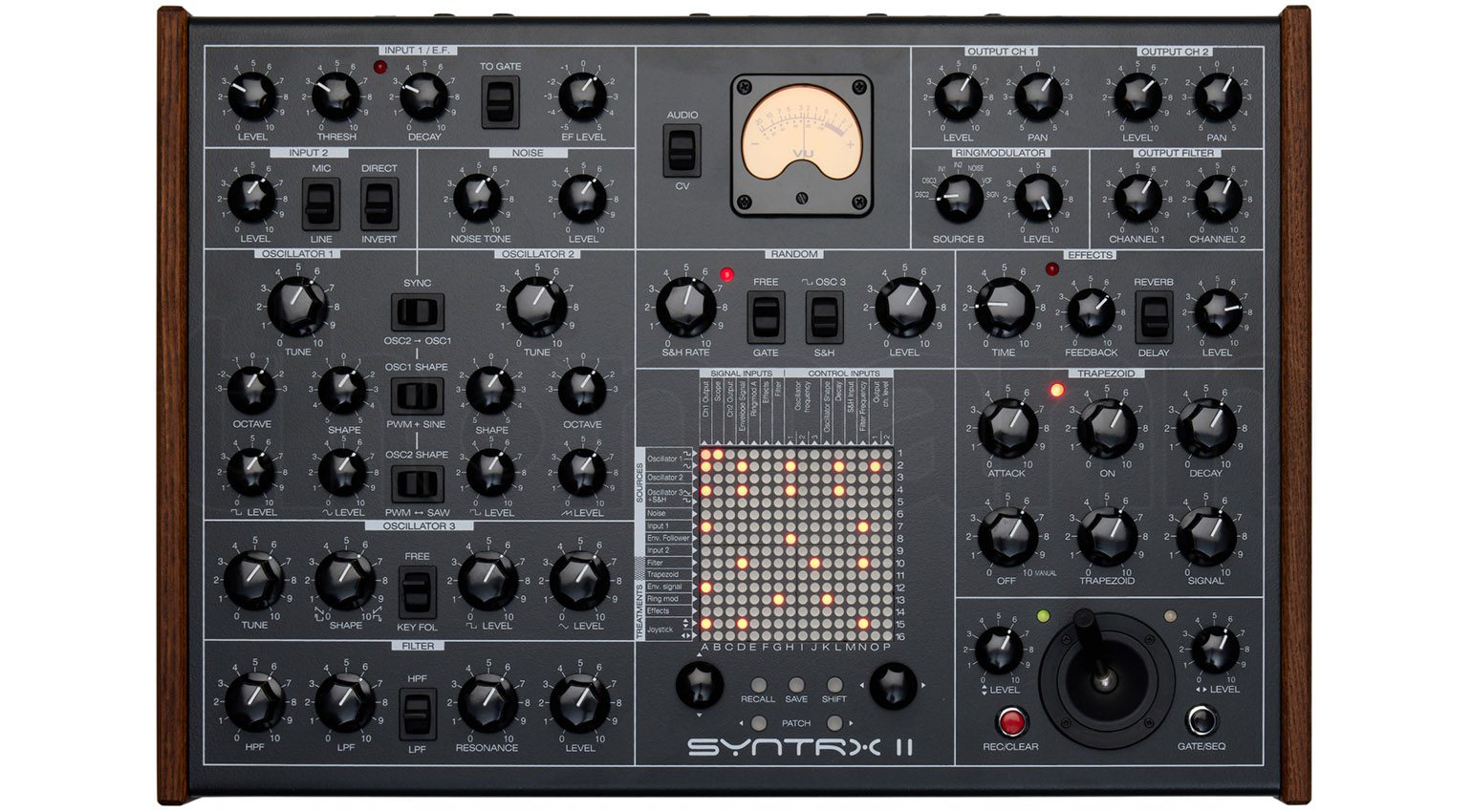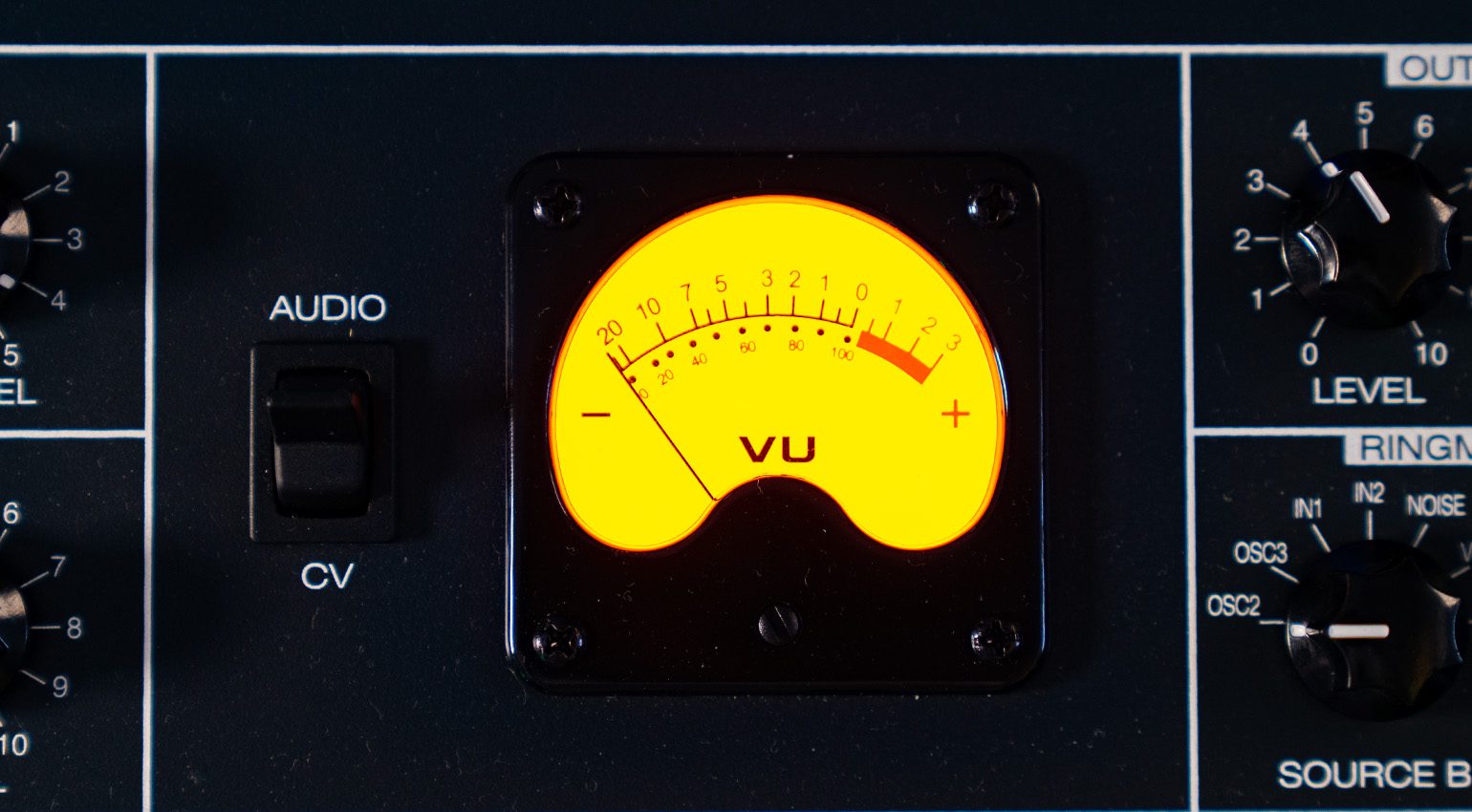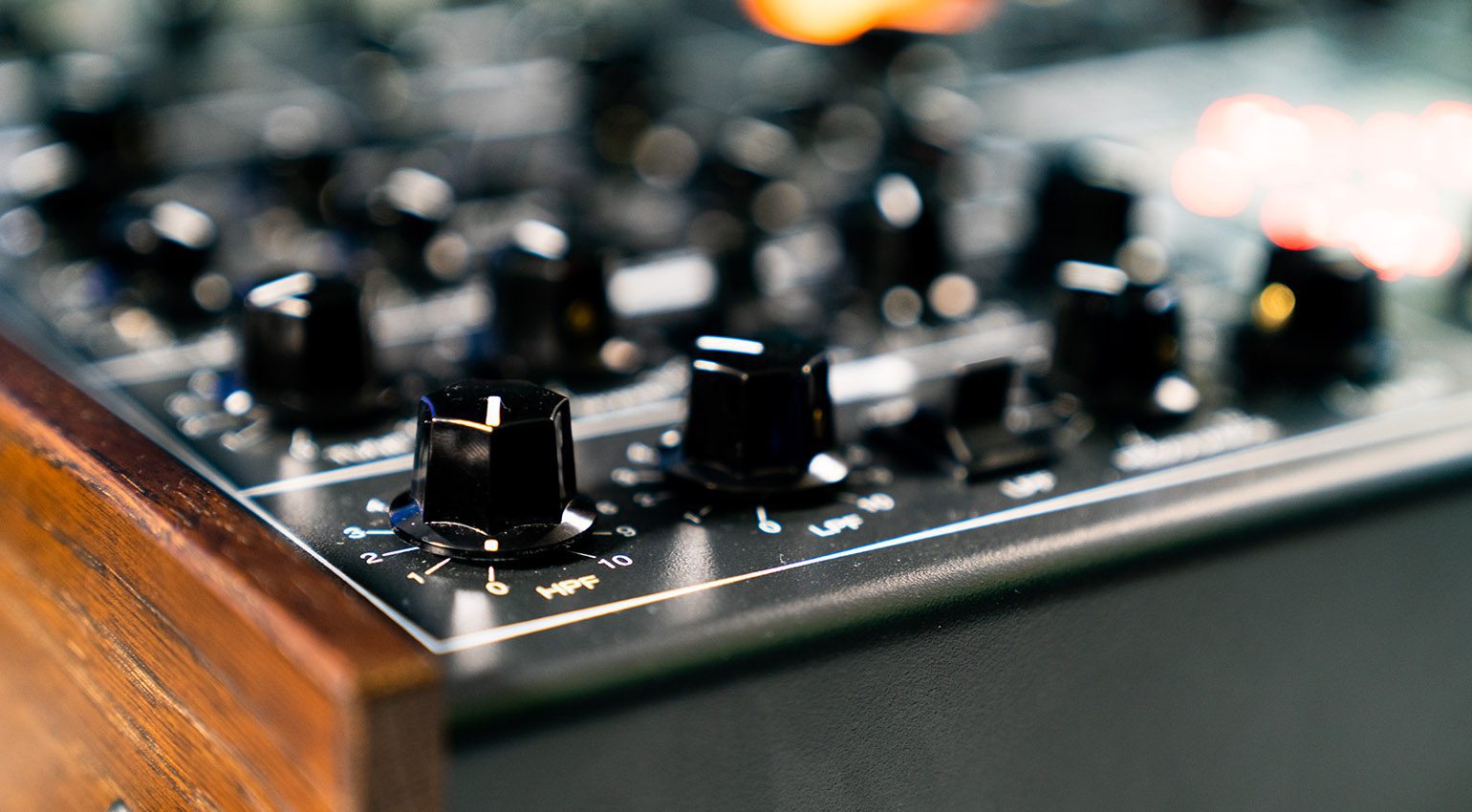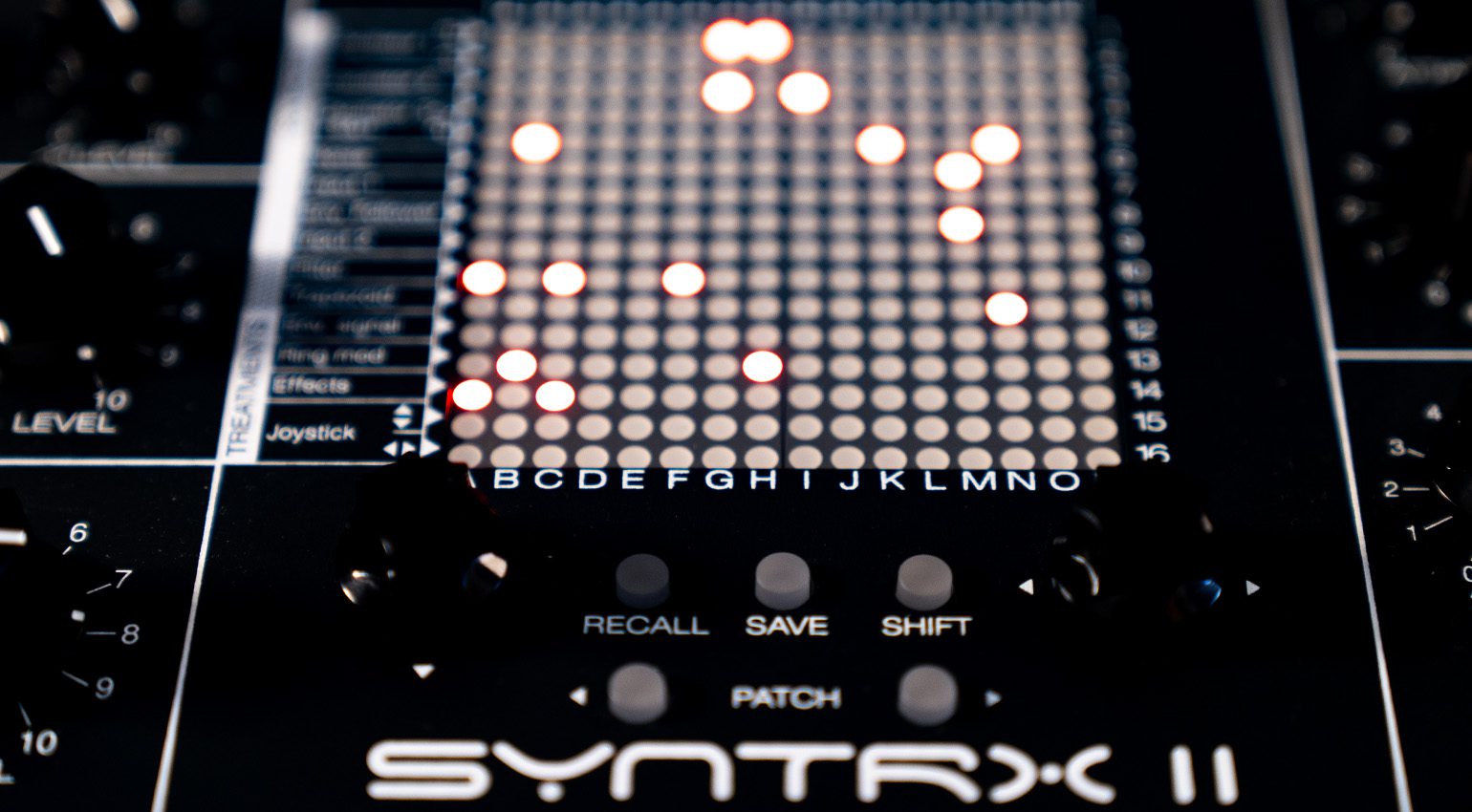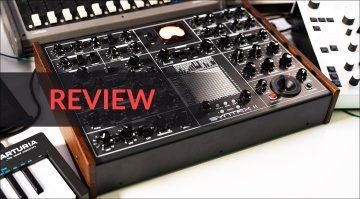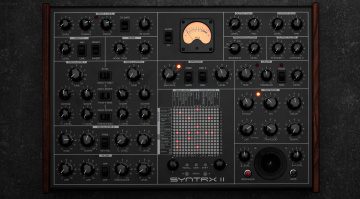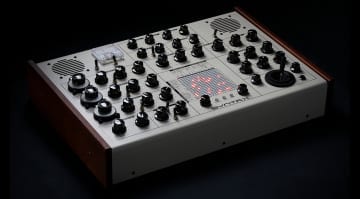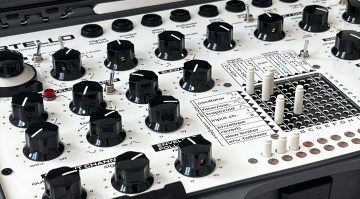Review: Erica Synths SYNTRX II – Sound design monster
Erica Synths’ EMS-inspired sound design monster synth, the SYNTRX II is now shipping after a long-anticipated wait. We got our hands on one of the first finished examples and we’re excited to bring you this hands-on review of this analogue monster.
Originally published on Gearnews.de by Marcus Schmahl, translation by Julian Schmauch.
Back in December 2019 Erica Synths released the SYNTRX II, the evolution of its modern “EMS clone”. Due to the sheer number of preorders and additional delivery issues, fans had to be patient for quite some time. But now the Erica Synths SYNTRX II is in stock. It brings new features, additional effects, and an improved workflow. I just had to test the synth in my studio. And it’s been some time since I have been this excited about unboxing a synth.
Erica Synths SYNTRX II – More than an EMS clone
When I saw the first video demos of the Erica Synths SYNTRX II, I was hooked. I just had to see it in action. Of course, I was also very keen to test the EMS Synthesizer concept the SYNTRX II is based on. In addition, version 1 was all the rage when it came out. And this time, the Lithuanian developers crammed even more ideas and features for sound design and workflow into the successor. And they succeeded, in my opinion.
So how does this new “modular” synth SYNTRX II sound? And is it versatile enough for the workflow in my studio? I was able to thoroughly test the machine in my testing lab in order to answer these and many other burning questions. Thank you, Erica Synths, for providing a review unit!
Unboxing
Unboxing the Erica Synths SYNTRX II is more on the bland side of unpacking gear. Besides the hardware, there is an external power supply, ten patch overlays, and a quick manual in the box. But just the look of this black-colored synth with wooden side panels is a sight to behold. There a quite a few equally black-colored knobs in different sizes, a yellow VU meter, a little joystick, and the patch matrix in brightly shining red. It just demands to be endlessly patched. Furthermore, Erica Synths is known for a particularly premium, “fat” sound. Sounds like a pretty long review session to me.
As a precursor, let me assure you that this synth brings much more to the table than I will be able to report on in this article. In fact, this review only scratches the surface of what the SYNTRX II is capable of. For instance, you can not only program note sequences in the newly integrated step sequencer. In addition, you can also program X- and Y-movements of the little joystick with it. Which brings a whole other dimension to rhythmically modulating parameters (with optional MIDI sync). You can also record up to 8 seconds of joystick movements. This also works with many parameters from the effects section. Their movements can also be recorded as rhythmic modulation.
Making sounds with the Erica Synths SYNTRX II
The SYNTRX II is no plug-and-play synth, as I discovered in the beginning. You don’t just turn it on and start playing, it needs internal patching first. If you don’t use any patch cables, the black box will remain cold and silent. That’s why I highly recommend familiarizing yourself with the structure and the different sections of the synth to fully comprehend how the instrument actually works.
On the left side, you see the sound generators. There are two audio inputs for external signals (or doubling internal signals), a multi-color noise generator, and two oscillators with two waveforms each (OSC1: square and sine, OSC2: square and saw). They both bring familiar parameters like “Tune”, “Octave”, “Shape”, “PWM”, and “Level”. Beneath them sits a third oscillator (with level knobs for square and triangle) that can also be used as an LFO.
Control, modulate, sound design
An adjustable highpass and lowpass filter completes the left side of the SYNTRX II. On the right side, there are individual level and panning knobs, and output filters for quick tone shaping for the two output jacks. Next to them, you’ll find the ring modulator with a source selector. The new effect section sits right underneath the RM. It brings along either a digital reverb or a delay (BBD or tape) with parameters “Time”, “Feedback” and “Level”.
The next module underneath packs the envelope generators and it is called “Trapezoid“. You get controls for “Attack”, “On”(-time), “Decay”, “Off”(time until value of “manual”, “Trapezoid”, and “Signal” (level”). Further down sits the little joystick for two-dimensional movements (X/Y). You can set the modulation depth for X and Y individually. Right in the middle of the SYNTRXII sits a bright, yellow VU meter. It displays values from selected audio or CV signals. In addition, there is a Sample-and-Hold generator in the middle for even more modulation.
Modulation Heaven with the Erica Synths SYNTRX II
Right underneath that, directly in front of me, sits the 16×16 patch matrix of EMS fame. It’s a digital matrix so there is no need for pins and cables. A red LED indicates a connection. Varying levels are also possible (the LED is dimmed according to the level). The labeling next to the matrix guides you through the modulation paths. Therefore, it is quite easy to route one section into another, send that into one of the outputs, but modulate it also on the way there. That is the fun that’s SYNTRX II.
In the beginning, the logical choice is to create simple connections just to get a sound out of this black box. The two clickable encoders underneath the matrix control the cursor (through an additional shortcut you can also use the joystick for that). So, let’s send OSC 1 through the filter, the filter through Env. Signal and the result to OUT1. Now I’ll just send a couple of MIDI notes from my MIDI controller through the MIDI input and “Voilà!”. Onwards to the effects. Let’s send Env. Signal to Effects to OUT2. Because this way, we can control the effects’ panning and volume separately. Nice!
Beginners vs. Advanced
You want more? Sure, me too! I can recommend the built-in randomizer for some sonic exploration. Hold Shift and hit the right arrow and just like that the dice are being rolled in the patch matrix. Of course, this sometimes results in sonic nonsense and utter noise fests, so dial down your output levels. But it’s a very creative way of discovering what’s possible with the Erica Synths SNTRX II. The box is known and loved for these kinds of drones and more “experimental” sounds. Through this “trick”, I discovered many seemingly illogical or nonsensical modulation connections that created sounds I had never heard before. The randomizer also helps spice up more conventional sounds.
In addition, playing with the “Off”-time in the trapezoid module can create weird, glitchy repetitions in the envelope generator. And these run independently from any incoming MIDI note. Furthermore, the SYNTRII is meant to be a “hands-on” synth. Only through constant noodling and manual patching do you gradually uncover the insane depths of this machine. One hand controls the joystick to modulate various parameters, the other hand turns some knobs on-the-fly. If you need more than two hands, you can record movements of any of the digital parameters (joystick, effects) and play them back as loops. You can sequence the joystick’s x- and y-axis as well. Here is a little example from a live jam from my studio.
You are currently viewing a placeholder content from YouTube. To access the actual content, click the button below. Please note that doing so will share data with third-party providers.
Sound design and more with the SYNTRX II
But it goes even further than that. You can route external audio signals through the two audio inputs and use them as modulation sources (or mix them with the signal inside the SYNTRX II). You can also use the internal audio signal as a modulation source. That is pre-routed in case the input jack remains empty.
You see: it’s a never-ending story with this machine! Designing sounds is just fun. After just a couple of days, this synthesizer has become one of my go-to sources for quickly creating the sound in my head. And due to its endlessly creative modulation matrix, the sounds I made quickly developed into completely new sonic territory. Furthermore, creating arpeggios or cool bass lines with the sequencer is just a blast. It really is worth it to do a deep dive with the SYNTRX II.
Conclusion
Erica Synths SYNTRXII isn’t just the best-looking synth in my studio. But just for that, the heavy build, the joystick, and the glowing VU meter all make it an absolute eye-catcher on my desktop. It also sounds marvellous as well. From bread and butter sounds to endless drones to completely alien soundscapes – literally everything is possible. And the clever randomizer is a constant source of new ideas and sounds for my tracks. The synth is just so much fun. Isn’t that what it is all about?
It’s hard to find any negative points about the SYNTRX II. I should mention, however, that this machine might be a bit overwhelming for absolute beginners. Creating a sound from the ground up requires some background knowledge about synthesis in general and a synthesizer’s signal flow. Furthermore, the machine’s sonic character can be a bit on the “out-there” side of things, depending on the modulation. That’s just something to keep in mind before buying it.
For around 2.000 Euros, you get a very solid synthesizer and just an amazing playground for sound designers for just about any genre. Here is another video demo I made with SYNTRX II as the leading actor in a live jam.
You are currently viewing a placeholder content from YouTube. To access the actual content, click the button below. Please note that doing so will share data with third-party providers.
Price and specifications
Erica Synths SYNTRX II goes for 2.138 Euros at Thomann.de* (Affiliate) zum Preis von 2.138,- Euro. A custom-fit case is optional.

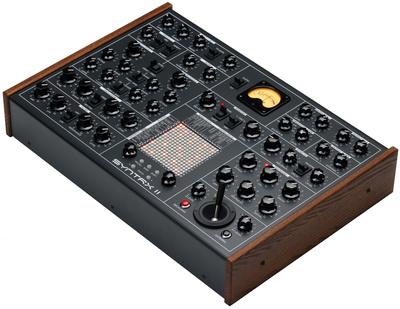

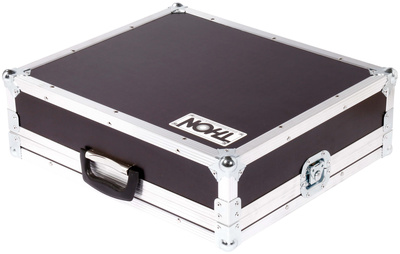
The hardware weighs 4.05 kilograms and is sized 457 x 309 x 115 mm (W x D x H). The SYNTRX II houses 46 knobs, 12 switches, 2 clickable, gridded endless encoders, and 7 buttons. Up to 254 patches from the patch matrix can be stored and accessed in from digital storage. In addition to the synth itself, there is a quick start guide, an external 12-volt power supply, and a variety of overlays for remembering patches in the box.
In terms of I/O, you get two DC-coupled instrument inputs each with signal inversion and envelope followers, a scope audio output, two assignable outputs, two CV inputs, a Gate In, MIDI IN/Thru (DIN), and a separate stereo headphone output. There is also the brightly lit VU meter. The patch matrix displays all current modulations. Additional information and the manual can be accessed on Erica Synths’ website.
More on Erica Synths and SYNTRX II
Additional Videos on the Erica Synths SYNTRX II
You are currently viewing a placeholder content from YouTube. To access the actual content, click the button below. Please note that doing so will share data with third-party providers.
You are currently viewing a placeholder content from YouTube. To access the actual content, click the button below. Please note that doing so will share data with third-party providers.
You are currently viewing a placeholder content from YouTube. To access the actual content, click the button below. Please note that doing so will share data with third-party providers.
* This post contains affiliate links and/or widgets. When you buy a product via our affiliate partner, we receive a small commission that helps support what we do. Don’t worry, you pay the same price. Thanks for your support!

 4,4 / 5,0 |
4,4 / 5,0 | 